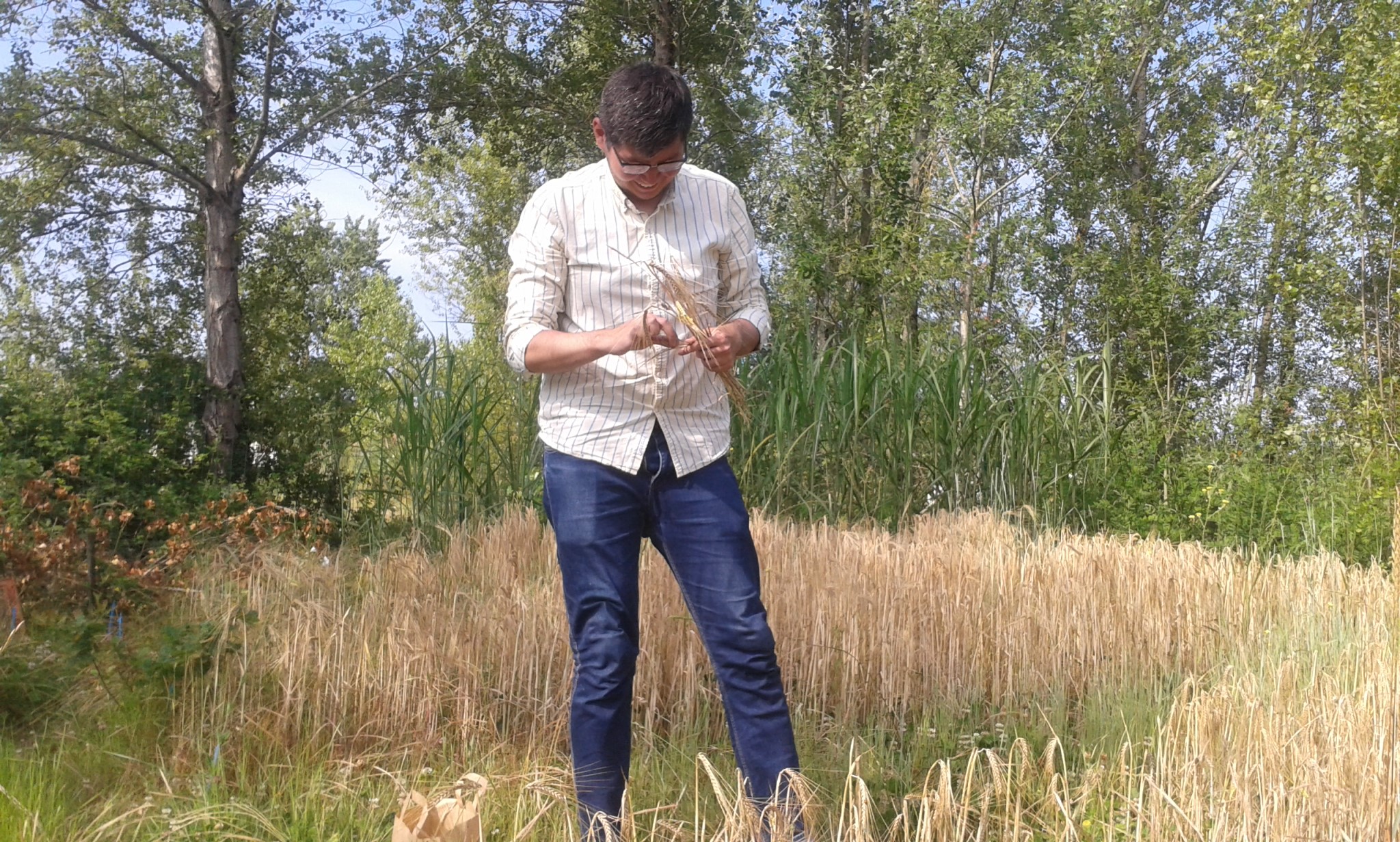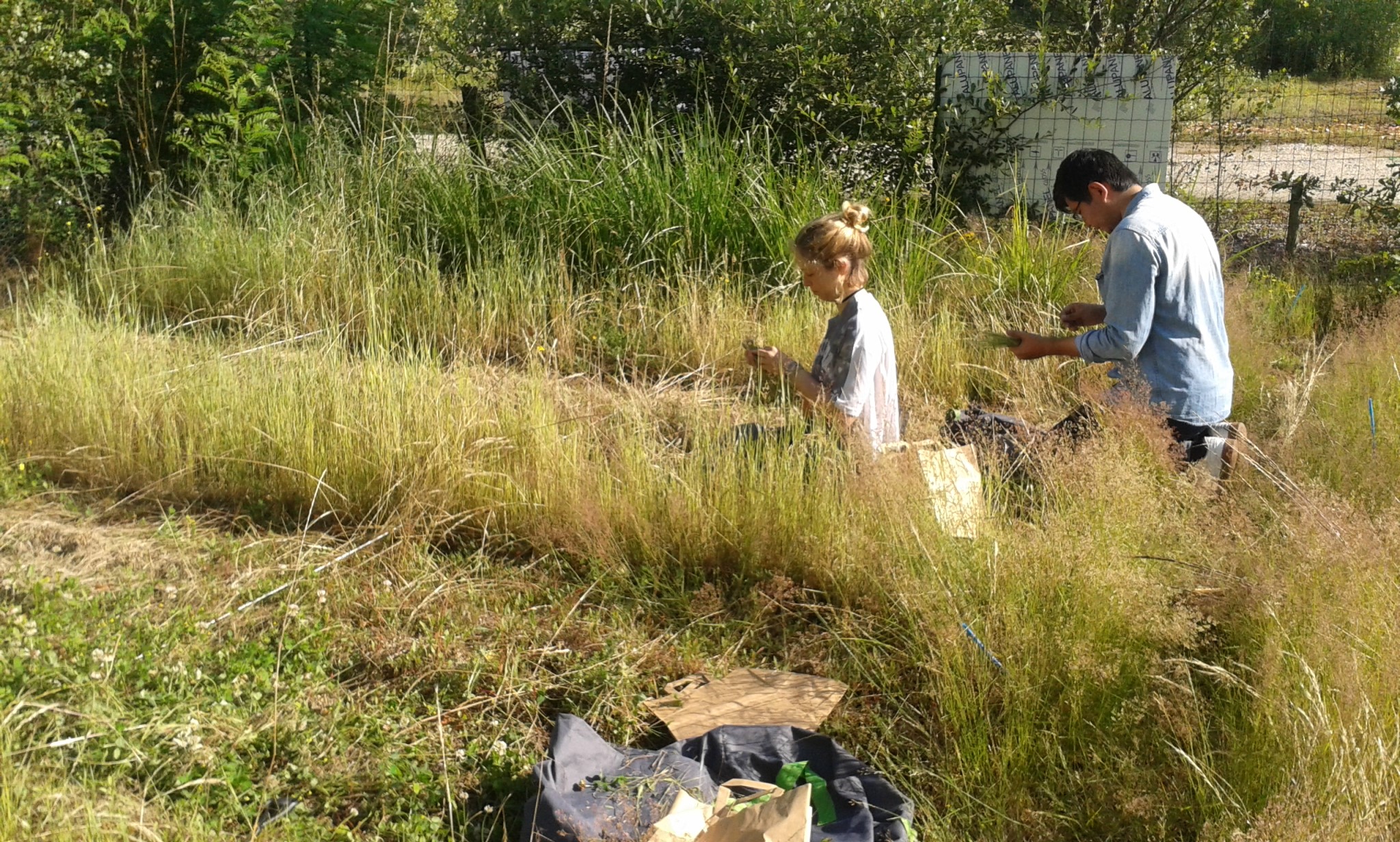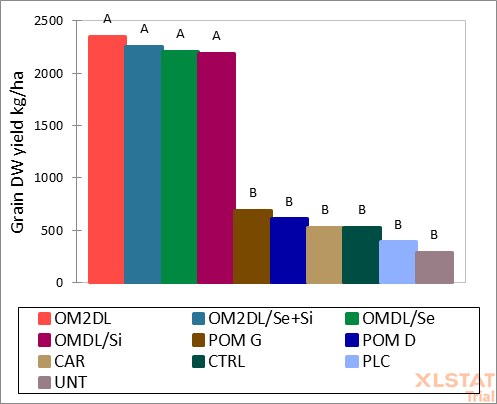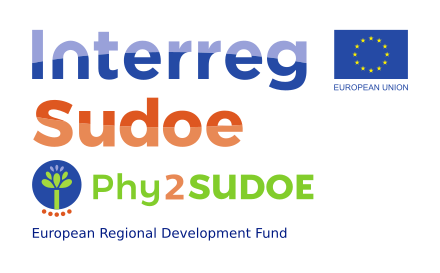
28 Dec INRAE researchers were measuring plant parameters at the Phy2SUDOE S1 site (St Médard d’Eyrans)
In mid-June and early July 2021, INRAE researchers were working at the Phy2SUDOE S1 site (St Médard d’Eyrans, France) to measure the maximum shoot length and to harvest winter barley (Hordeum vulgare L. cv. Séduction) and then grain-type intermediate wheatgrass (Thinopyrum intermedium cv Kernza).

Harvest of intermediate wheatgrass at the S1 site
The plots at this former wood preservation site were previously managed to remediate the Cu/PAH-contaminated soils. After several years of sunflower / tobacco crops for the phytoextraction of bioavailable soil Cu and biodegradation of PAHs, the purpose was to assess the culture of other valuable crops such as cereals and the recovery of soil ecosystem services (biomass production, biodiversity of soil microbial community, etc.). Both cereals were sowed in October 2020. Plant parameters were then investigated. In April and May 2021, Leaf Area Index (LAI), maximum stem length, and chlorophyll index were measured.
For winter barley, the aboveground biomass and grain yield peaked in plots amended with compost with and without the foliar fertilization with either the Si/Fe-EDTA or Se/I formulations. Grain yield varied from 290 (untreated plots) to 2 352 kg DW/ha (compost dressings in years 1 and 6). Changes in ear and grain numbers were more discriminant than the grain mass across soil treatments. For intermediate wheatgrass, the shoot DW yield was higher (up to 1160 kg DW/ha) in the compost-amended plots than the basic slag-amended plots and unamended ones, with a slight beneficial effect of the foliar Si/Fe-EDTA fertilization. The analysis of plant parts is ongoing.


